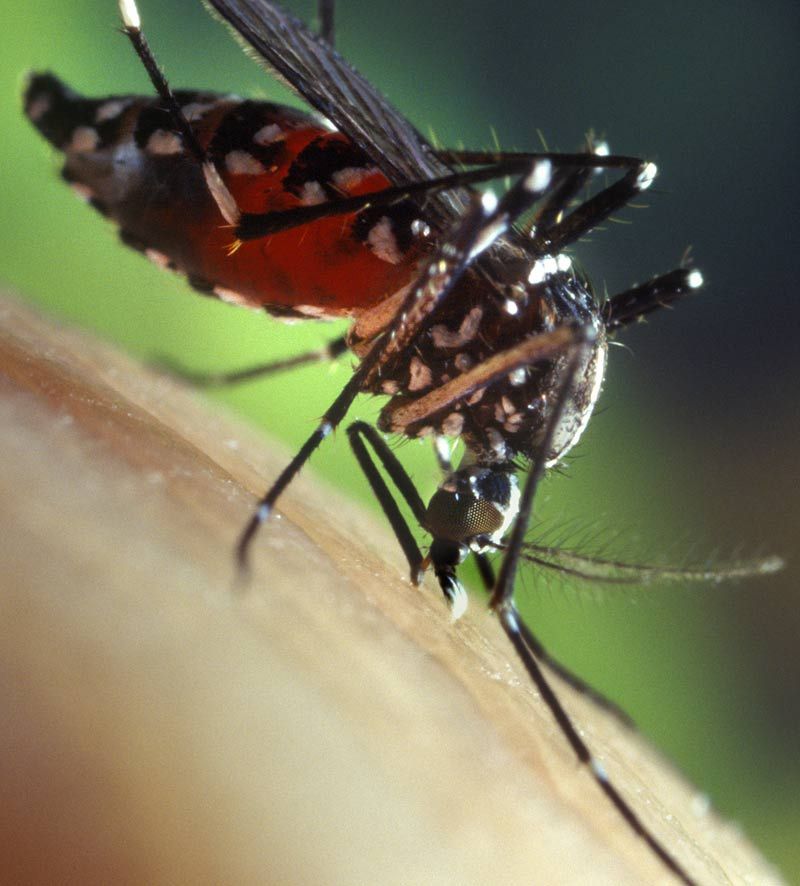Warming Planet May Help Exotic Disease Invade New York

NEW YORK — The name of the disease, chikungunya, means "that which bends" in an African language, and it describes the posture of its victims, bent over by severe joint pain.
Once a sporadic problem in Africa and Asia, this viral disease has been expanding its range since 2004, even spreading within Italy. And, with some help from global warming, New York City could be next, Laura Harrington, a medical entomologist at Cornell University warned on Tuesday here at Cornell.
The chikungunya virus causes severe joint pain, fever, rash and other symptoms that can last for months, even years, and in unusual cases, death. There is no vaccine and no treatment. [Poll: Do You Fear New Diseases?]
The virus on its own can't travel across continents or even between victims. It partners with two mosquito species that spread the virus among hosts when they suck blood. One of these insects, the Asian tiger mosquito, is already living in temperate regions, including the New York area.
The Asian tiger mosquito is believed to have arrived in the United States in the mid-1980s, possibly in tires, Harrington said. In a laboratory experiment, she found 80 percent of a strain of Asian tiger mosquitoes in the New York/New Jersey area were able to pick up the virus and transmit it in their saliva.
This is where climate change comes in. The mosquito benefits from warmer temperatures, since mild winters make it possible for its eggs to survive the winter, and more of these mosquitoes make it more likely that an infection brought in by a traveler could spread.
Already, cases of chikungunya carried by travelers have been documented in the United States.
Sign up for the Live Science daily newsletter now
Get the world’s most fascinating discoveries delivered straight to your inbox.
Using computer modeling, she has examined the potential for the introduction of the disease, and the results indicate season matters for the New York City metropolitan area. The window of risk opens in July, when the arrival of an infected person could start an outbreak. The risk peaks in August and dies down in fall, Harrington said. [5 Ways Climate Change Will Affect Health]
"This is right now, and we know temperatures are just going to increase, and we know the population of Asian tiger mosquitoes is going to increase, so it will only get wider and wider," she said of the window in which the disease could be introduced to New York.
The study suggested the probability of a single, infected person starting an outbreak in the New York City metro area peaked at 38 percent. However, this predication is more relevant to the future than it is to the current summer, since the models assumed a higher population of Asian tiger mosquitoes than currently exists in the New York City area, she said.
The expansion of chikungunya, whose name is derived from the Makonde language, is not unique.
Other tropical diseases spread by carrier animals are expanding their ranges thanks to climate change. These include the mosquito-borne West Nile Virus which has recently become established in North America and others, such as Rift Valley Fever, are seen as threats.
The expansion of human diseases isn't unique either. The chikungunya forecasts were made as part of the larger Cornell Climate and Disease Program, which considers risk to humans and wildlife, according to Drew Harvell, who studies coral disease at Cornell.
A warmer world is a sicker world, Harvell told journalists during their presentation in midtown Manhattan.
In this context, humans are like corals, which are also facing increased disease linked with climate change, Harvell said.
Warming waters cause the corals, the basis for important coral reef ecosystems, to bleach, or expel the symbiotic algae, which provide them with color. This leaves the corals more susceptible to disease. Meanwhile warmer waters can be more hospitable to the pathogens that cause the diseases in the first place.
"It's really a double whammy, not only does the host become more stressed and susceptible but also the pathogens are growing faster," Harvell said. "That's the key to why a warmer world can be a sicker world."
Ocean acidification, driven by increasing carbon dioxide in the atmosphere, is also hurting corals by interfering with their ability to build their skeletons, she said.
Cornell's Atkinson Center for a Sustainable Future and National Institute for Food & Agriculture Hatch Act funds supported the chikungunya modeling project.
You can follow LiveScience senior writer Wynne Parry on Twitter @Wynne_Parry. Follow LiveScience for the latest in science news and discoveries on Twitter @livescience and on Facebook.

In a 1st, trial finds vitamin D supplements may slow multiple sclerosis. But questions remain.

Simple blood tests could be the future of cancer diagnosis









